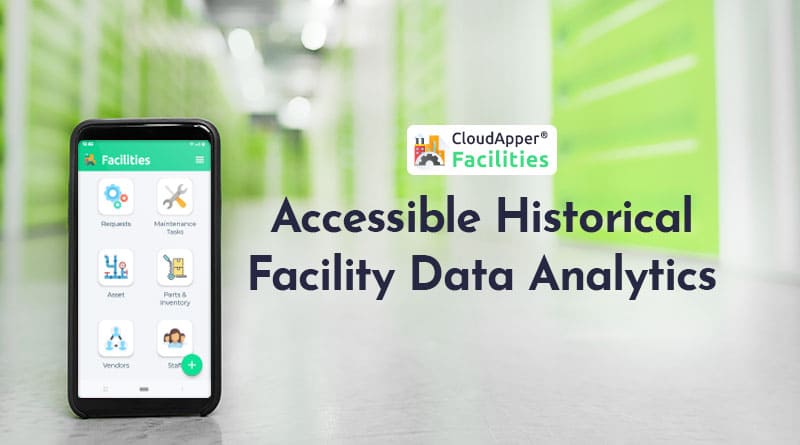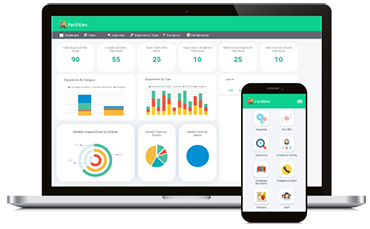Table of Contents
Facility Management Systems collect and analyze readily available historical facility data analytics to find significant data trends, patterns, and insights. The information gathered from data analytics is used by facility teams to improve visibility, make data-backed decisions, and plan strategic initiatives.
Facility Management Systems can benefit from four different forms of historical facility data analytics:
Descriptive: Based on current facility data, depicts what’s going on right now.
Diagnostic: Explains why the facility data is the way it is and why certain occurrences occurred.
Predictive: Assists in predicting what is likely to happen.
Prescriptive: Describes how to manipulate facility data and make significant changes.
Key Benefits of Historical Facility Data Analytics
Data analytics can be used by facilities management teams to assist important business activities. The following are some of the primary advantages:
Enhanced Visibility
Get an overview of all sites, assets, service providers, and resources to gain visibility on equipment, expenditure, contractors’ performance, sustainable facilities, and repair and maintenance volumes.
Increased Efficiency
By referring to analytical data, you may prioritize resources where they will have the most impact, prevent bottlenecks, and identify opportunities for efficiency improvement. Set KPIs and keep track of your success.
Reduced Spend
With expenditure, invoice, proposal, and work order volume analytics, you may find cost-saving opportunities. Using supplier, contractor, trade, category, district, and region-specific data, allocate spending sensibly and strategically. Create and track cost-control benchmarks across sites.
Data-Backed Decision-Making
Based on concrete analytical insights, make all facilities management choices, including resource allocation, asset management, and contractor sourcing. Stakeholders across the organization should be informed of the logic behind all decisions.
Predicted Revenue
Using FM system analytics, calculate expected income and outcomes intelligently. Repair and maintenance tasks should be prioritized based on their potential business value.
Improved Work Quality
Examine the performance of individual maintenance employees to ensure that their job meets your expectations. Only hire those who have a track record of producing high-quality repair and maintenance services.
CloudApper Facilities Provides Easy-to-Access Historical Facility Data Analytics
Powered by CloudApper: CloudApper Facilities is based on a fully flexible platform that can collect user input, combine data from many legacy sources, and show data via easy online and mobile dashboards.
Intuitive Interface: To rapidly gather insights and plan future moves, navigate via easy-to-use, visual-based reports, and graphics.
Multi-Site Management: Access analytics data from all of your company’s locations, split down by different metrics. View, learn, strategize, and plan for success across numerous sites by looking at, learning, strategizing, and planning efficiency-building and cost-saving efforts.
Varied Standard Report Options: Find out about work orders, providers of services, trade, and categories, invoices, expenditure, and locations from standard report templates.
What is CloudApper AI Platform?
CloudApper AI is an advanced platform that enables organizations to integrate AI into their existing enterprise systems effortlessly, without the need for technical expertise, costly development, or upgrading the underlying infrastructure. By transforming legacy systems into AI-capable solutions, CloudApper allows companies to harness the power of Generative AI quickly and efficiently. This approach has been successfully implemented with leading systems like UKG, Workday, Oracle, Paradox, Amazon AWS Bedrock and can be applied across various industries, helping businesses enhance productivity, automate processes, and gain deeper insights without the usual complexities. With CloudApper AI, you can start experiencing the transformative benefits of AI today. Learn More


















